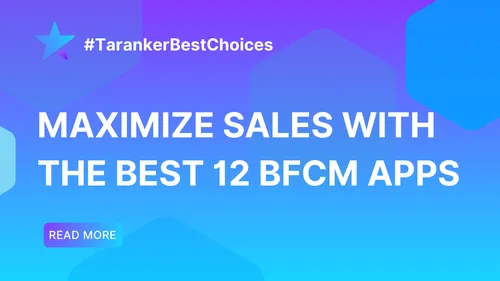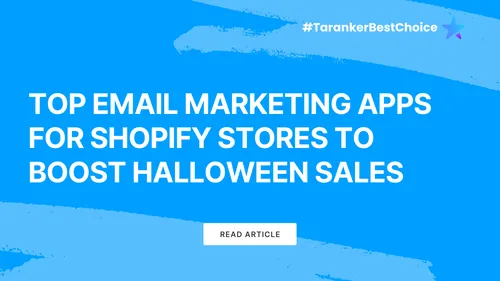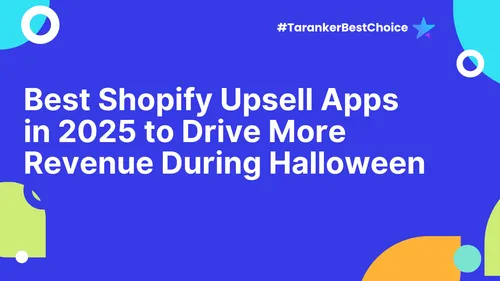In today’s competitive ecommerce market, standing out is more critical than ever. The market is saturated, and customers are increasingly expecting more than just great products—they want exceptional experiences. According to PwC, 73% of consumers say that customer experience is an important factor in their purchasing decisions, and 86% are willing to pay more for a better experience.
This is why creating an engaging, seamless, and personalized experience for your customers is crucial to driving sales, increasing loyalty, and differentiating your Shopify store from competitors. As ecommerce stores continue to grow, businesses must focus on crafting experiences that not only attract new customers but keep them coming back.
In this blog, we will dive into the key strategies for creating an engaging customer experience that helps your ecommerce store stand out, builds loyalty, and drives increased sales.

1. Understanding Your Customer Journey
1.1. What is the Customer Journey?
The customer journey is the complete sequence of experiences a customer goes through when interacting with your business. From the first time they hear about your store to the point they make a purchase and beyond, the customer journey involves many different touchpoints.
Understanding this journey is vital to providing a personalized and engaging experience. You can break the customer journey into the following stages:
-
Awareness: The customer becomes aware of your product or brand through ads, social media, or word-of-mouth.
-
Consideration: They evaluate your products, read reviews, and compare your prices.
-
Purchase: The customer buys from your store.
-
Post-purchase: After the sale, you continue to engage with the customer via follow-up emails or support.
1.2. How to Use the Customer Journey to Engage Shoppers
At each stage of the customer journey, you should craft experiences and messaging that resonate with their needs and expectations. For instance:
-
Awareness: Create content that educates and informs. A well-designed blog, videos, and product teasers can make your brand stand out.
-
Consideration: Use personalized emails or retargeting ads to keep your brand top of mind. Provide comparisons or guides to help customers make decisions.
-
Purchase: Ensure a seamless and easy checkout experience, with multiple payment options, clear shipping information, and simple product descriptions.
-
Post-purchase: Follow up with thank-you emails, product recommendations, or loyalty incentives.
Actionable Tip: Map out your customer journey and identify the key touchpoints. Use this map to guide your decisions and make improvements at each stage.
2. Personalization: How to Make Every Customer Feel Special
2.1. Why Personalization is Crucial in Ecommerce
Personalization has become one of the most important aspects of the customer experience. Consumers today expect tailored content, offers, and experiences. According to Epsilon, 80% of consumers are more likely to make a purchase when a brand offers personalized experiences.
Personalization goes beyond just addressing the customer by their name; it’s about crafting experiences and offers that reflect their preferences, browsing behavior, and past interactions with your store.
2.2. How to Implement Personalization
-
Product Recommendations: Use data-driven insights to suggest products based on previous browsing and purchase history. Tools like Shopify’s product recommendation engine can help.
-
Email Marketing: Send personalized emails with recommendations based on past purchases, abandoned cart reminders, and exclusive offers.
-
Dynamic Website Content: Use personalization tools to display recent viewed products, location-based offers, or special promotions for VIP customers.
Actionable Tip: Tools like Klaviyo or Omnisend allow you to automate personalized emails based on customer behavior, leading to higher engagement and conversions.
3. Delivering a Seamless and Convenient Shopping Experience
3.1. Why Convenience is Key to Customer Satisfaction
One of the key factors that contribute to a positive customer experience is convenience. In fact, 63% of consumers say that the ease of navigating a website is a major factor when deciding where to shop. A seamless shopping experience not only makes it easier for customers to find what they’re looking for but also enhances their overall satisfaction with your brand.
3.2. How to Make Your Ecommerce Store User-Friendly
-
Mobile Optimization: Ensure your store is mobile-responsive. More than 54% of global ecommerce sales are made on mobile devices, so a smooth mobile shopping experience is essential.
-
Simple Checkout Process: Reduce friction by offering guest checkout, multiple payment options, and a minimal number of steps to complete the purchase.
-
Fast Load Time: Slow websites drive customers away. Ensure your store is optimized for speed by compressing images, enabling lazy loading, and using a reliable hosting provider.
Actionable Tip: Test your website’s performance using Google PageSpeed Insights to ensure a fast, smooth shopping experience.
4. Creating Engaging Content and Storytelling
4.1. The Power of Storytelling in Ecommerce
Storytelling is a powerful tool in building a strong connection with your customers. By sharing your brand's story, values, and mission, you can foster an emotional connection that resonates with your target audience.
4.2. How to Use Storytelling to Enhance Customer Engagement
-
Brand Storytelling: Share how your business was founded, your vision, and what makes your products unique. This creates an authentic and emotional connection with your audience.
-
Product Storytelling: Highlight the benefits and unique features of your products. Show how they solve problems or enhance the customer’s life.
-
User-Generated Content: Feature customer stories, reviews, or photos. Social proof can significantly boost trust and engagement.
Actionable Tip: Use Instagram Stories, TikTok videos, or blog posts to share behind-the-scenes content or customer testimonials, creating a more human connection with your audience.
5. Providing Exceptional Customer Support
5.1. Why Customer Support is a Core Element of Engagement
Customer support is integral to providing a great experience, especially when problems arise. Excellent customer service can differentiate your brand and create loyal, repeat customers. 61% of consumers say that good customer support influences their decision to shop again.
5.2. How to Offer Exceptional Support
-
Omnichannel Support: Offer support via live chat, email, social media, and phone to ensure that customers can reach you in the way that’s most convenient for them.
-
Proactive Support: Use automated tools to send check-in emails after purchases, offering assistance or asking for feedback.
Actionable Tip: Use Shopify's Live Chat Integration or tools like Tidio to offer real-time support, ensuring customers feel heard and valued.
6. Implementing Loyalty Programs to Drive Repeat Business
6.1. Why Loyalty Programs Matter
Loyalty programs are a proven way to retain customers and increase their lifetime value. In fact, 65% of customers are likely to shop with a brand that offers loyalty rewards. Loyalty programs incentivize repeat purchases and can help build a community around your brand.
6.2. How to Create an Effective Loyalty Program
-
Points-Based System: Award customers points for every purchase, which can be redeemed for discounts or products.
-
Referral Program: Encourage existing customers to refer their friends in exchange for discounts or rewards.
-
VIP Perks: Offer exclusive access to sales, products, or content for repeat customers.
Actionable Tip: Use Smile.io or LoyaltyLion to easily implement a loyalty program on your Shopify store.
7. Creating a Memorable Post-Purchase Experience
7.1. The Importance of Post-Purchase Engagement
A great post-purchase experience keeps customers coming back for more. 72% of customers expect follow-up communication after their purchase. Providing excellent service even after the sale fosters loyalty and encourages repeat purchases.
7.2. How to Engage Customers After a Purchase
-
Follow-Up Emails: Send a thank-you email, encourage them to leave a review, and suggest related products.
-
Customer Surveys: Ask for feedback to understand what they liked and where you can improve.
-
Loyalty Incentives: Offer discounts or loyalty points for future purchases as a reward for their business.
Actionable Tip: Use Shopify's automated post-purchase email system to engage customers immediately after their order is shipped.
Conclusion:
Creating an engaging customer experience goes beyond offering great products; it’s about crafting an experience that resonates with your customers at every touchpoint. From building trust through personalized emails to offering seamless shopping experiences and delivering excellent support, every interaction matters.
The businesses that thrive in today’s ecommerce market are the ones that understand their customers’ needs and deliver exceptional service, value, and engagement. By implementing these strategies, your Shopify store can stand out, build long-term relationships with customers, and ultimately increase sales.
Start applying these strategies today to turn your ecommerce store into a brand that customers trust and love to engage with.















